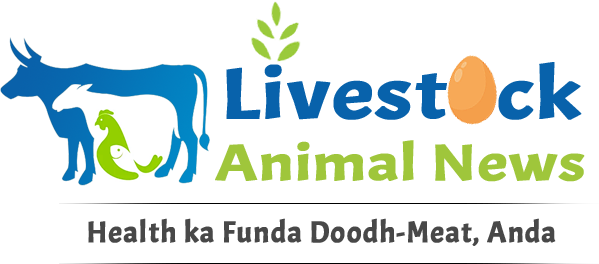News Delhi. The activities undertaken by the Ministry of Health & Family Welfare (MoHFW) for rabies elimination across the country are as follows: Launch of NAPRE: – Under the ‘National Rabies Control Program’, the “National Action Plan for Dog-Mediated Rabies Elimination by 2030” (NAPRE) was conceptualized and jointly launched by the Ministry of Health and Family Welfare (MoHFW) in collaboration with the Ministry of Fisheries, Animal Husbandry, and Dairying (MoFAHD) on September 28, 2021. The NAPRE guidelines consist of two components: Human Health and Animal Health. The implementation of the Human Health component is undertaken by the ‘National Centre for Disease Control’ (NCDC) under Ministry of Health and Family Welfare with dedicated budgetary support, while the implementation of the Animal Health component is to be undertaken by the Department of Animal Husbandry and Dairying (DAHD) under MoFAHD. As per Animal Birth Control (Dogs) Rules, 2001 Mass dog vaccination and dog population management are being done by the animal husbandry department in collaboration with local body authorities.
- Budgetary support to the states under National Rabies Control Program: Under the “National Health Mission”, the states are being supported by providing budget for implementing the ‘National Rabies Control Program’ (NRCP) through budget for Capacity building of the healthcare staff, procurement of rabies vaccines, printing of IEC for rabies & dogbite prevention, for data entry support, review meetings, Monitoring and Surveillance, establishment of Model Anti Rabies Clinics & Wound Washing facilities.
- Availability of ARV and ARS in Health facilities: – The lifesaving drugs like Anti-Rabies Vaccine (ARV) and Anti-Rabies Serum (ARS)/Rabies Immunoglobulin (RIG) are being provided at government hospitals and health facilities under the National Free Drug Initiative of the National Health Mission (NHM). These drugs are also included in the essential drug list of the states.
- Workshops conducted under NRCP for SAPRE: – To develop the ‘State Action Plan for Rabies Elimination’(SAPRE), regional level workshops have been conducted for southern states, northeastern states, North region states and Delhi in the last two years. Rajasthan, Puducherry, Meghalaya, Mizoram, Tamilnadu have already launched their SAPREs, while Karnataka, Telangana, Andhra Pradesh, Nagaland, Sikkim, Assam, Manipur, Madhya Pradesh, Jharkhand, Odisha, and Delhi are yet to launch their SAPREs. Rest other states are drafting their SAPRE
- Establishment of Model Anti Rabies Clinics across the states: Support is being provided to the states’ Health Departments for establishing “Model Anti-Rabies Clinics” in the districts to provide care to dog bite victims. As of now, 279 Model Anti-Rabies Clinics have become operational in the last three years.
- Strengthening the Diagnostic Labs for Rabies Diagnosis: – Across country 14 diagnostic laboratories of government health institutions have been strengthened under the National Rabies Control Program for rabies diagnosis in the selected states/UTs.
- Issues advisories and Communication letters to the states: – Issued advisory to all states by the Ministry of Health and Family Welfare (MoHFW), Government of India (GoI), urging them to classify Human Rabies as a Notifiable Disease under relevant acts. Presently, Human Rabies is notifiable in 23 States/UTs. Additionally, various communications have been sent to the states for implementation of National Rabies Control Program (NRCP) through surveillance, availability of ARV/ARS, training to stakeholders on dogbite and rabies cases management, establishment of Model Anti Rabies Clinics, ensuring Wound washing facility in public hospitals and centres.
- Rabies Free City Imitative: – The Rabies-Free Cities initiative has commenced in a phased manner, targeting Tier 1 and Tier 2 cities for rabies prevention & control. The initiative is being implemented in 15 cities of 6 states and planned for expansion to 114 cities across country.
- Formulation of Committees at National & state Level under National Rabies Control Program: – The National Joint steering committee for Rabies Elimination (NJSC-RE) has been constituted under the chairpersonship of Secretary (HFW)-MoHFW and Co-chairpersonship of Secretary Department of Animal Husbandry and Dairying (DAHD), Ministry of Fisheries, Animal Husbandry, and Dairying for overall steering the program in the country and to formulate policy, legislations and framework for regulatory mechanism. Similarly, to advise the program division on various technical aspects the National Technical Advisory committee (NTAC) was constituted under the chairpersonship of DGHS. In line with NJSC; state and district-level Joint Steering Committees for Rabies Elimination have been established across states and districts to regular review program progress under NRCP.
- Develop Guidelines and resource documents under National Rabies Control Program: – Various guidelines on rabies prophylaxis and training modules have been developed for medical officers and health workers and disseminated with the states/UTs.
- Training Programs under National Rabies Control Program: – Numerous training sessions for healthcare professionals on proper animal bite management and rabies post-exposure prophylaxis (PEP) have been conducted across all States/UTs. Around 1,66,470 medical officers, paramedical staff, and nurses have been trained in dog bite management from 2019 to 2025 (till Feb’25).
- Community Awareness on Dogbite and Rabies: – Community awareness about rabies prevention is being raised through advocacy, communication, and social mobilization campaigns. To create the awareness to the public and healthcare professionals Dog bite protocols, IEC materials, and training videos on the management of animal bite/dog bite cases for medical officers have been created and disseminated across the country. Reference: https://rabiesfreeindia.mohfw.gov.in/iec
- Observance of “World Rabies Day”: – To further promote awareness about rabies, “World Rabies Day” is observed annually on 28th September at both the national and state levels. During this event, awareness activities on the Do’s and Don’ts of handling dogs, dog bite cases, and the importance of rabies vaccination are conducted, particularly in schools for children.
- Created dedicated website for National Rabies Control Program: – A dedicated National Rabies Control Program website has been launched on 12th March 2024 to enhance surveillance and reporting of animal bites, suspected/probable/confirmed rabies cases/deaths, and vaccination schedules, with a web-based portal currently under development. Reference: https://rabiesfreeindia.mohfw.gov.in/
- Rabies Helpline: – A dedicated Rabies helpline (15400) in Hindi & English is being implemented for five states (Madhya Pradesh, Delhi, Puducherry, Andhra Pradesh, and Assam) in phase one, with plans for subsequent expansion in other states.
- Strengthening Surveillance mechanism under National Rabies Control Program: – The program has enhanced surveillance of rabies cases and animal bites. States are compiling dog bite and rabies death cases on monthly basis and uploading the data to the Integrated Disease Surveillance Programme (IDSP) Portal.
This information was given by Union Minister of State, Ministry of Fisheries, Animal Husbandry and Dairying, Prof. S.P. Singh Baghel, in a written reply in Lok Sabha on 1st April, 2025.

















Leave a comment